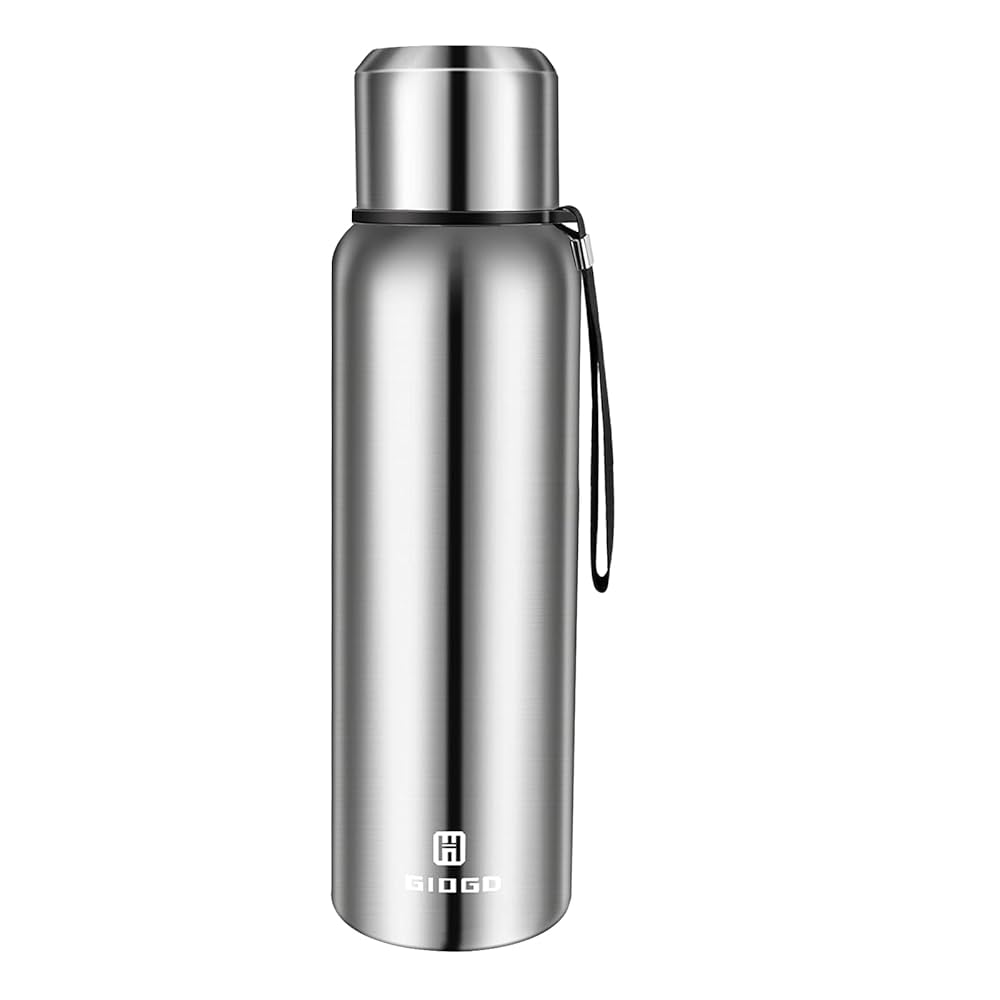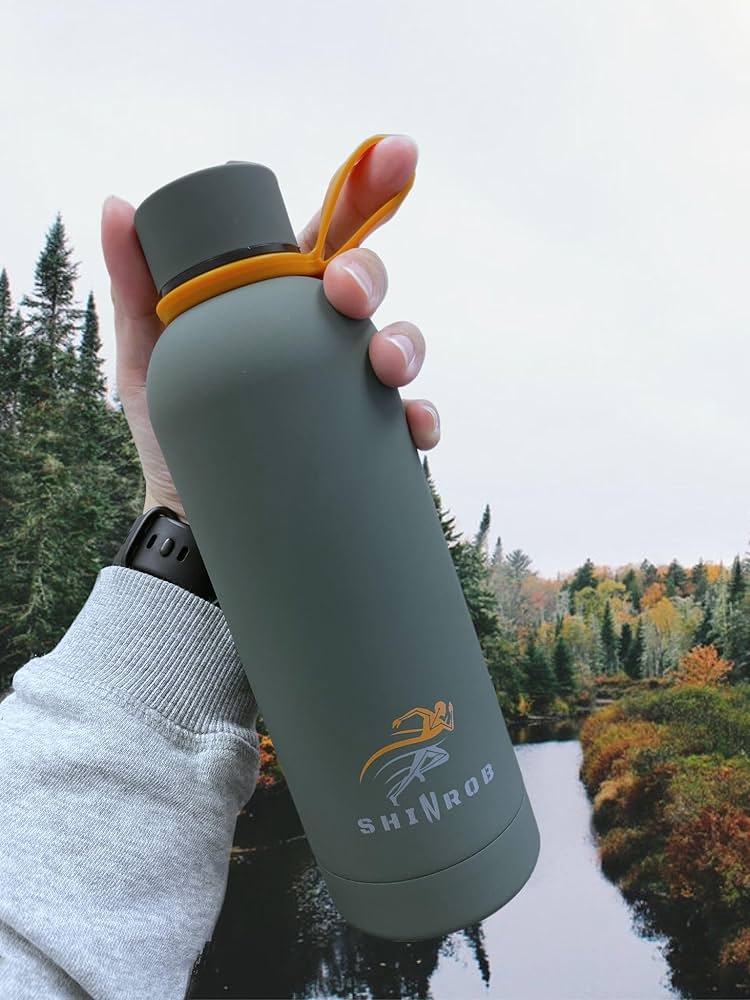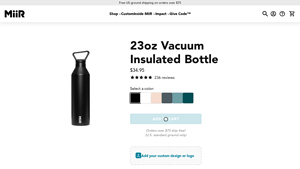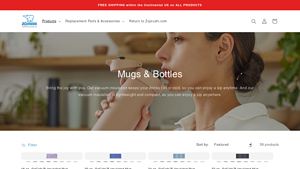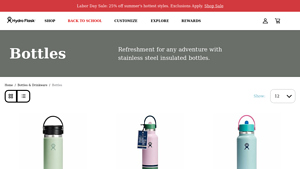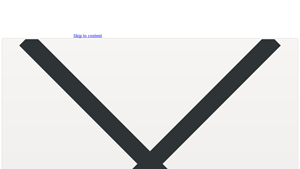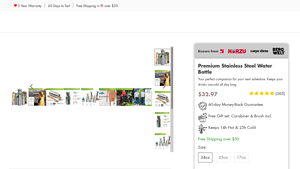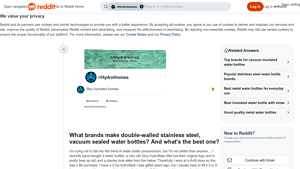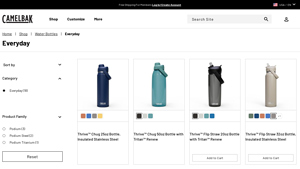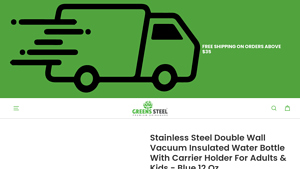Introduction: Navigating the Global Market for stainless steel vacuum insulated water bottle
Navigating the global market for stainless steel vacuum insulated water bottles presents a unique challenge for international B2B buyers. With a growing demand for sustainable and high-quality hydration solutions, sourcing the right products can be overwhelming. This guide aims to demystify the complexities of the stainless steel vacuum insulated water bottle market by providing a comprehensive overview of types, applications, and key considerations for supplier vetting and cost analysis.
Understanding the diverse range of products available is crucial for making informed purchasing decisions. From lightweight models ideal for outdoor adventures to sleek designs suited for corporate gifting, the variety is extensive. Additionally, buyers will learn about the manufacturing standards and certifications that can affect product quality, ensuring they partner with reputable suppliers.
This guide is tailored specifically for international B2B buyers from regions like Africa, South America, the Middle East, and Europe, including key markets such as Nigeria and Germany. By equipping these buyers with actionable insights and best practices, we empower them to confidently navigate the sourcing process, optimize their procurement strategies, and ultimately enhance their product offerings. Whether you are looking to expand your inventory or meet the rising consumer demand for eco-friendly products, this guide serves as an essential resource in your journey toward successful sourcing.
Navigation dans les articles
- Top 9 Stainless Steel Vacuum Insulated Water Bottle Manufacturers & Suppliers List
- Introduction: Navigating the Global Market for stainless steel vacuum insulated water bottle
- Understanding stainless steel vacuum insulated water bottle Types and Variations
- Key Industrial Applications of stainless steel vacuum insulated water bottle
- 3 Common User Pain Points for ‘stainless steel vacuum insulated water bottle’ & Their Solutions
- Strategic Material Selection Guide for stainless steel vacuum insulated water bottle
- In-depth Look: Manufacturing Processes and Quality Assurance for stainless steel vacuum insulated water bottle
- Practical Sourcing Guide: A Step-by-Step Checklist for ‘stainless steel vacuum insulated water bottle’
- Comprehensive Cost and Pricing Analysis for stainless steel vacuum insulated water bottle Sourcing
- Alternatives Analysis: Comparing stainless steel vacuum insulated water bottle With Other Solutions
- Essential Technical Properties and Trade Terminology for stainless steel vacuum insulated water bottle
- Navigating Market Dynamics and Sourcing Trends in the stainless steel vacuum insulated water bottle Sector
- Frequently Asked Questions (FAQs) for B2B Buyers of stainless steel vacuum insulated water bottle
- Avis de non-responsabilité et conditions d'utilisation
- Strategic Sourcing Conclusion and Outlook for stainless steel vacuum insulated water bottle
Understanding stainless steel vacuum insulated water bottle Types and Variations
| Nom du type | Principales caractéristiques | Applications primaires B2B | Avantages et inconvénients pour les acheteurs |
|---|---|---|---|
| Narrow Mouth Bottles | Slim design, twist lid, cup holder compatible | Corporate gifts, outdoor events | Pour : Compact, versatile. Cons : Limited opening for cleaning. |
| Bouteilles à large ouverture | Larger opening for easy filling and cleaning, often with a handle | Sports teams, fitness centers | Pour : Easy to fill and clean. Cons : Bulkier, may not fit in all cup holders. |
| Insulated Mugs | Designed for both hot and cold beverages, often with a lid | Coffee shops, catering services | Pour : Versatile use, good temperature retention. Cons : May lack portability features. |
| Bouteilles personnalisables | Options for branding and personalization | Promotional items, giveaways | Pour : Améliore la visibilité de la marque. Cons : Higher initial costs for customization. |
| Travel-Sized Bottles | Compact, lightweight, designed for portability | Travel agencies, outdoor retail | Pour : Ideal for on-the-go use. Cons : Smaller capacity may require more frequent refills. |
What Are the Key Characteristics of Narrow Mouth Bottles?
Narrow mouth stainless steel vacuum insulated bottles are characterized by their slim design and twist lid, making them ideal for those who need a portable hydration solution. These bottles often feature a cup holder-compatible base, enhancing their usability for customers in various settings. B2B buyers should consider their suitability for corporate gifting or outdoor events, where a sleek design is appreciated. However, the limited opening can complicate cleaning and filling.
How Do Wide Mouth Bottles Differ in Functionality?
Wide mouth bottles have a larger opening that allows for easy filling, pouring, and cleaning. They often come with ergonomic handles for convenient carrying, making them popular among sports teams and fitness centers. These bottles are particularly useful for businesses that require quick access to hydration during activities. While they offer functional benefits, their bulkier design may not fit in all cup holders, which could be a drawback for some buyers.
Why Are Insulated Mugs Valuable for B2B Applications?
Insulated mugs are designed to keep beverages hot or cold, making them an attractive option for coffee shops and catering services. Many of these mugs come with lids, enhancing their usability for both hot and cold drinks. For B2B buyers, the versatility of insulated mugs makes them suitable for various settings, but they may lack the portability features found in traditional bottles, which could limit their appeal in mobile environments.
What Advantages Do Customizable Bottles Offer?
Customizable stainless steel vacuum insulated bottles allow businesses to enhance their brand visibility through personalization. These bottles can be printed with logos or specific designs, making them effective promotional items. While they provide a unique marketing opportunity, buyers should be aware that customization can lead to higher initial costs, which may affect budget considerations for smaller businesses.
How Do Travel-Sized Bottles Meet Market Demands?
Travel-sized bottles are compact and lightweight, designed for portability. They cater to the needs of travel agencies and outdoor retail businesses, offering a convenient hydration solution for customers on the go. These bottles are ideal for individuals who require frequent refills, especially in outdoor settings. However, their smaller capacity may necessitate more frequent use, which could be a consideration for buyers looking for longer-lasting hydration solutions.
Key Industrial Applications of stainless steel vacuum insulated water bottle
| Industrie/secteur | Specific Application of stainless steel vacuum insulated water bottle | Valeur/bénéfice pour l'entreprise | Principales considérations en matière d'approvisionnement pour cette application |
|---|---|---|---|
| Alimentation et boissons | Catering and Events | Enhances guest experience with temperature-controlled beverages. | Ensure bottles are durable, easy to clean, and customizable. |
| Outdoor and Adventure | Sports et loisirs | Provides hydration solutions for outdoor activities and sports. | Look for lightweight designs and high thermal retention. |
| Cadeaux d'entreprise | Employee Engagement Programs | Promotes brand visibility while encouraging sustainability. | Consider branding options and bulk purchasing discounts. |
| L'hospitalité | Hotels and Resorts | Offers guests a premium experience with stylish hydration options. | Assess quality, aesthetics, and eco-friendly sourcing practices. |
| Santé et bien-être | Fitness Centers and Gyms | Supports health-conscious consumers with reusable hydration solutions. | Evaluate ease of use, portability, and design for active lifestyles. |
How Are Stainless Steel Vacuum Insulated Water Bottles Used in the Food and Beverage Industry?
In the food and beverage sector, stainless steel vacuum insulated water bottles are integral for catering and event services. They ensure that beverages maintain their desired temperatures, whether serving hot coffee or chilled drinks, enhancing overall guest satisfaction. For B2B buyers in this industry, it’s crucial to source bottles that are not only durable and easy to clean but also customizable to reflect branding. The ability to provide a premium experience can significantly impact customer loyalty and event success.
What Role Do Stainless Steel Vacuum Insulated Water Bottles Play in Outdoor and Adventure Activities?
For businesses in the outdoor and adventure industry, these insulated bottles are essential for providing hydration solutions during sports and recreational activities. They keep drinks cold for extended periods, which is particularly appealing for athletes and outdoor enthusiasts. Buyers should prioritize lightweight designs that offer high thermal retention, ensuring convenience and effectiveness during activities. This focus on functionality can attract customers looking for reliable hydration options.
How Can Corporations Benefit from Using Stainless Steel Vacuum Insulated Water Bottles as Gifts?
In corporate gifting, stainless steel vacuum insulated water bottles serve as a stylish and functional way to promote employee engagement. These bottles not only provide hydration but also enhance brand visibility, especially when customized with logos. When sourcing for this application, businesses should consider bulk purchasing discounts and various branding options to maximize impact. The sustainability aspect of reusable bottles also aligns with corporate social responsibility goals, appealing to environmentally conscious employees.
Why Are Stainless Steel Vacuum Insulated Water Bottles Important for Hospitality?
In the hospitality industry, hotels and resorts can elevate their guest experience by providing high-quality stainless steel vacuum insulated water bottles. These bottles not only serve as practical hydration solutions but also contribute to a luxurious and eco-friendly image. Buyers in this sector should assess the quality and aesthetics of the bottles to ensure they align with their brand standards. Additionally, sourcing practices that emphasize sustainability can further enhance the hotel’s reputation among environmentally aware travelers.
How Do Stainless Steel Vacuum Insulated Water Bottles Support Health and Wellness Initiatives?
Fitness centers and gyms utilize stainless steel vacuum insulated water bottles to promote health and wellness among their clientele. These bottles encourage the use of reusable containers, reducing single-use plastic waste and supporting a sustainable lifestyle. For international B2B buyers, evaluating the ease of use, portability, and design tailored for active individuals is essential. By offering high-quality hydration solutions, businesses can foster a community focused on health and sustainability, attracting more members.
3 Common User Pain Points for ‘stainless steel vacuum insulated water bottle’ & Their Solutions
Scenario 1: Difficulty in Maintaining Temperature for Extended Periods
Le problème : Many B2B buyers, particularly those in the hospitality or outdoor event sectors, often face the challenge of ensuring that beverages remain at the desired temperature throughout the day. For instance, catering companies may find that their stainless steel vacuum insulated water bottles fail to keep coffee hot or water cold for the entire duration of an event, leading to customer dissatisfaction and potential loss of business.
La solution : To address this issue, it’s crucial for B2B buyers to prioritize the quality of vacuum insulation when sourcing these bottles. Buyers should look for products featuring double-wall vacuum insulation technology, which effectively minimizes heat transfer. Additionally, considering the size and design of the bottle can impact temperature retention. For example, a bottle with a narrower mouth may minimize heat loss when opened. Furthermore, conducting temperature retention tests during the selection process can help ensure that the bottles meet specific needs for various events. Establishing a reliable supply chain with manufacturers who offer warranties on their products can also provide peace of mind and assurance of quality.
Scenario 2: Leaks and Spills During Transportation
Le problème : Another common pain point for B2B buyers is dealing with leaks and spills when transporting stainless steel vacuum insulated water bottles. Companies that distribute beverages often face complaints about bottles that do not seal properly, leading to messy deliveries and wasted products. This not only affects the quality of service but can also damage the company’s reputation.
La solution : To mitigate this risk, buyers should seek water bottles with advanced leak-proof designs. It’s advisable to look for products that feature a patented leak-proof lid with a secure threading mechanism. Additionally, testing different lid designs to identify which ones offer the best seal under various conditions—such as temperature changes or pressure—can provide valuable insights. Buyers should also consider investing in bottles that have undergone rigorous quality control tests to ensure durability and leak resistance. Educating end-users on the proper usage and maintenance of the bottles can further reduce the likelihood of leaks.
Scenario 3: Challenges with Sourcing Sustainable Products
Le problème : As sustainability becomes increasingly important, many B2B buyers struggle to find stainless steel vacuum insulated water bottles that are responsibly sourced and environmentally friendly. Buyers, especially those in European markets, often face scrutiny from consumers and regulatory bodies about the sustainability of the products they offer, creating pressure to ensure that their supply chains align with eco-friendly practices.
La solution : Buyers should prioritize sourcing from manufacturers that adhere to sustainability certifications and practices. It’s beneficial to request information about the sourcing of materials, such as whether the stainless steel is recycled or produced with minimal environmental impact. Engaging with suppliers who provide transparency in their manufacturing processes can help ensure that the products align with sustainability goals. Furthermore, considering partnerships with suppliers who actively participate in social responsibility initiatives can enhance brand image and appeal to eco-conscious consumers. Conducting regular audits and assessments of the supply chain can also ensure ongoing compliance with sustainability standards.
Strategic Material Selection Guide for stainless steel vacuum insulated water bottle
What Are the Key Materials for Stainless Steel Vacuum Insulated Water Bottles?
When selecting materials for stainless steel vacuum insulated water bottles, several options are commonly utilized. Each material has distinct properties, advantages, and limitations that can significantly influence product performance and marketability. Below, we analyze four prevalent materials: 18/8 Stainless Steel, 304 Stainless Steel, 316 Stainless Steel, and BPA-Free Plastic.
What Are the Key Properties of 18/8 Stainless Steel?
18/8 stainless steel, also known as type 304 stainless steel, is widely used in the manufacturing of vacuum insulated water bottles. This material consists of 18% chromium and 8% nickel, which provides excellent corrosion resistance and durability. It can withstand temperatures up to 500°F (260°C) and has a pressure rating suitable for typical beverage applications.
Pour : The key advantages of 18/8 stainless steel include its high resistance to rust and staining, making it ideal for long-term use. It is also relatively cost-effective, ensuring a good balance between quality and price for manufacturers.
Cons : However, its manufacturing process can be complex due to the need for precise welding and finishing, which may increase production times and costs.
Impact sur l'application : 18/8 stainless steel is compatible with a wide range of beverages, including acidic drinks like lemon water, without imparting flavors or odors.
Considérations pour les acheteurs internationaux : Compliance with international standards such as ASTM and DIN is crucial. Buyers from regions like Africa and South America may also prioritize cost-effectiveness, while European buyers might emphasize sustainability and recyclability.
How Does 304 Stainless Steel Compare?
304 stainless steel shares similar properties with 18/8 stainless steel but is often considered a more general term for the same alloy. It retains excellent corrosion resistance and is suitable for various applications, including food and beverage containers.
Pour : Its widespread use ensures that suppliers can easily source this material, which can lead to lower costs and improved supply chain reliability.
Cons : The main limitation is that while it is durable, it may not perform as well in highly corrosive environments compared to higher-grade materials like 316 stainless steel.
Impact sur l'application : 304 stainless steel is suitable for most beverages, but it may not be the best choice for saltwater or highly acidic products.
Considérations pour les acheteurs internationaux : Buyers should verify compliance with local food safety regulations, especially in regions with stringent health standards.
What Are the Benefits of 316 Stainless Steel?
316 stainless steel is often referred to as marine-grade stainless steel due to its superior corrosion resistance, particularly in saline environments. It contains molybdenum, which enhances its durability against chlorides and other corrosive agents.
Pour : The key advantage of 316 stainless steel is its exceptional longevity and resistance to pitting, making it ideal for high-end applications and premium products.
Cons : However, this material comes at a higher cost compared to 18/8 and 304 stainless steel, which may deter budget-conscious buyers.
Impact sur l'application : 316 stainless steel is well-suited for bottles intended for outdoor and marine use, as well as for storing acidic beverages.
Considérations pour les acheteurs internationaux : Buyers in the Middle East and Europe may prefer this material for its durability and compliance with high-quality standards.
What Role Does BPA-Free Plastic Play?
While stainless steel is the primary material for vacuum insulated bottles, BPA-free plastic is often used for lids and components. This material is lightweight and can be molded into various shapes.
Pour : The main advantage of BPA-free plastic is its cost-effectiveness and versatility in design. It is also lightweight, making it ideal for portable applications.
Cons : However, it lacks the thermal retention properties of stainless steel and may not withstand high temperatures, which can limit its use in certain applications.
Impact sur l'application : BPA-free plastic is suitable for non-heated applications and can be used in conjunction with stainless steel to enhance functionality.
Considérations pour les acheteurs internationaux : Compliance with safety standards is critical, especially in regions where consumer awareness regarding plastic safety is high.
Summary Table of Material Selection
| Matériau | Typical Use Case for stainless steel vacuum insulated water bottle | Avantage clé | Principaux inconvénients/limites | Coût relatif (faible/moyen/élevé) |
|---|---|---|---|---|
| Acier inoxydable 18/8 | General-purpose water bottles | High corrosion resistance | Complex manufacturing process | Moyen |
| Acier inoxydable 304 | Food and beverage containers | Cost-effective and widely available | Lower performance in corrosive environments | Moyen |
| Acier inoxydable 316 | Premium and marine-grade applications | Exceptional durability | Higher cost | Haut |
| Plastique sans BPA | Lids and components for water bottles | Lightweight and versatile | Poor thermal retention | Faible |
This strategic material selection guide provides B2B buyers with essential insights into the materials used in stainless steel vacuum insulated water bottles, enabling informed decisions that align with their specific market needs and compliance requirements.
In-depth Look: Manufacturing Processes and Quality Assurance for stainless steel vacuum insulated water bottle
What Are the Key Stages in Manufacturing Stainless Steel Vacuum Insulated Water Bottles?
The manufacturing process of stainless steel vacuum insulated water bottles involves several critical stages, each contributing to the final product’s quality and functionality. Understanding these stages is essential for B2B buyers looking to source reliable products.
1. Material Preparation: What Materials Are Used?
The first step in manufacturing involves sourcing high-quality stainless steel, typically 18/8 (304) grade, known for its durability and resistance to corrosion. The stainless steel is often pre-treated to enhance its properties, including cleaning and polishing to remove any impurities. During this stage, suppliers may also prepare other components such as silicone seals, lids, and handles. B2B buyers should ensure that suppliers source materials that meet international standards for safety and quality, such as food-grade certifications.
2. Forming: How Are the Bottles Shaped?
Forming is where the stainless steel is shaped into the desired bottle structure. This can involve various techniques, including deep drawing, where a flat sheet of stainless steel is drawn into a mold to form the bottle’s body. The process may also include spinning or stamping, depending on the design specifications. Advanced techniques such as hydroforming can create complex shapes while maintaining material integrity. B2B buyers should inquire about the machinery and technology used, as modern equipment can significantly impact the quality and precision of the final product.
3. Assembly: What Happens After Forming?
After forming, the assembly stage integrates various components, including the vacuum insulation layer. This is achieved by placing a second layer of stainless steel around the inner layer, followed by creating a vacuum between the two layers. This vacuum acts as an insulator, preventing heat transfer. The assembly also includes attaching lids and seals, ensuring that they fit tightly to prevent leaks. Buyers should confirm that suppliers utilize automated assembly lines for consistency and efficiency, as well as manual inspections to ensure quality.
4. Finishing: How Is the Product Prepared for Market?
Finishing involves surface treatments that enhance the aesthetic appeal and functionality of the bottles. This may include powder coating, polishing, or applying a textured finish. The finishing process not only improves the product’s look but also adds a layer of protection against scratches and wear. B2B buyers should consider the finishing options available, as these can affect the product’s marketability and durability.
What Quality Assurance Practices Are Essential for Stainless Steel Water Bottles?
Quality assurance (QA) is a critical component of the manufacturing process, ensuring that products meet established standards and customer expectations. For international B2B buyers, understanding QA practices can help mitigate risks associated with product quality.
1. What International Standards Are Relevant?
Manufacturers typically adhere to international quality standards such as ISO 9001, which outlines requirements for a quality management system. Compliance with these standards demonstrates a commitment to quality and continuous improvement. Additionally, industry-specific certifications like CE (Conformité Européenne) and API (American Petroleum Institute) may apply, depending on the product’s intended use. Buyers should request documentation proving compliance with these standards to ensure the product meets necessary regulations.
2. What Are the Key Quality Control Checkpoints?
Quality control (QC) checkpoints are integrated into various stages of the manufacturing process, including:
-
Contrôle de la qualité à l'arrivée (IQC) : This stage assesses the quality of raw materials and components before production begins. It’s crucial for ensuring that only high-quality materials are used.
-
Contrôle de la qualité en cours de fabrication (IPQC) : During manufacturing, IPQC checks are performed at various points to monitor the production process, ensuring that it adheres to established standards.
-
Contrôle de qualité final (CQF) : This stage involves a comprehensive inspection of the finished product, including functional testing and visual inspections to confirm that the water bottles meet design specifications.
B2B buyers should ensure that their suppliers have robust QC protocols in place, including detailed documentation of inspections and testing results.
3. What Common Testing Methods Are Employed?
Manufacturers utilize various testing methods to validate product quality, including:
-
Test d'étanchéité : Ensures that seals and lids are airtight and prevent leakage.
-
Essai d'isolation thermique : Measures the effectiveness of the vacuum insulation layer in maintaining temperature over time.
-
Test de durabilité : Assesses the product’s ability to withstand impacts, drops, and other stressors.
-
Test des matériaux : Confirms that the stainless steel meets specified grades and is free from contaminants.
Buyers should discuss testing methods with suppliers and request test reports to verify product performance.
Comment les acheteurs B2B peuvent-ils vérifier le contrôle de la qualité des fournisseurs ?
For B2B buyers, particularly those in Africa, South America, the Middle East, and Europe, verifying a supplier’s quality control practices is essential for ensuring product reliability.
1. What Are Effective Verification Methods?
-
Audits des fournisseurs : Conducting on-site audits can provide insight into a supplier’s manufacturing processes and quality control measures. Audits can assess compliance with international standards and evaluate the effectiveness of their QC systems.
-
Requesting Quality Reports: Buyers can ask suppliers for quality control reports, including IQC, IPQC, and FQC documentation, to understand the testing and inspection processes.
-
Inspections par des tiers : Engaging independent third-party inspection services can help verify that products meet required standards before shipment. This adds an extra layer of assurance for buyers.
2. What Nuances Should International Buyers Consider?
International buyers must be aware of regional regulations and certifications that may differ from their home markets. For example, CE marking is crucial for products sold in Europe, while other regions may have specific compliance requirements. Understanding these nuances can help buyers avoid potential issues with customs and regulatory compliance.
In conclusion, a thorough understanding of the manufacturing processes and quality assurance practices for stainless steel vacuum insulated water bottles is vital for B2B buyers. By focusing on material preparation, forming, assembly, and finishing, along with rigorous quality control measures, buyers can ensure they source high-quality products that meet international standards. This comprehensive knowledge empowers buyers to make informed decisions, fostering long-term partnerships with reliable suppliers.
Practical Sourcing Guide: A Step-by-Step Checklist for ‘stainless steel vacuum insulated water bottle’
In the competitive landscape of B2B procurement, sourcing high-quality stainless steel vacuum insulated water bottles requires a systematic approach. This guide provides a comprehensive checklist for international buyers, particularly those from regions like Africa, South America, the Middle East, and Europe. By following these steps, you can ensure that you select the right product and supplier for your needs.
Étape 1 : Définir les spécifications techniques
Begin by outlining the specific requirements for the stainless steel vacuum insulated water bottles you intend to procure. Consider factors such as capacity (e.g., 16oz, 23oz), insulation technology, and material quality.
– Qualité des matériaux : Look for 18/8 stainless steel, which is durable and resistant to rust and corrosion.
– Insulation Performance: Ensure the product maintains temperature effectively for both hot and cold beverages.
Étape 2 : Research Market Trends
Understanding current market trends can help you make informed purchasing decisions. Investigate what features are popular among consumers and what price points are competitive.
– Consumer Preferences: Look for bottles with features like leak-proof lids, ergonomic designs, and eco-friendly materials.
– Regional Insights: Some regions may have specific preferences, such as color variations or branding opportunities.
Étape 3 : Évaluer les fournisseurs potentiels
Before making a commitment, conduct a thorough evaluation of potential suppliers. Request company profiles, production capabilities, and client references.
– Certifications: Ensure suppliers have necessary certifications, such as ISO or FDA approvals, indicating quality and safety standards.
– Reputation: Investigate supplier reviews and testimonials from other businesses to gauge reliability.
Étape 4 : Demande d'échantillons
Always request samples of the products before placing a bulk order. This allows you to assess the quality and functionality firsthand.
– Quality Assurance: Check for defects, finish, and overall usability of the product.
– Testing: Consider conducting performance tests to evaluate insulation effectiveness and durability under different conditions.
Étape 5 : Négocier les conditions et les prix
Once you have identified a suitable supplier, initiate discussions on pricing and payment terms. Negotiating can lead to better deals, especially for bulk orders.
– Payment Flexibility: Discuss payment terms that align with your budget and cash flow, such as net 30 or net 60.
– Remises en vrac : Inquire about discounts for larger quantities, which can significantly reduce your overall costs.
Étape 6 : Understand Shipping and Logistics
Plan for shipping and logistics early in the procurement process to avoid unexpected delays and costs.
– Options d'expédition : Discuss available shipping methods, costs, and estimated delivery times to ensure they meet your timeline.
– Customs and Duties: Be aware of any customs regulations or duties that may apply when importing products into your country.
Étape 7 : Establish a Quality Control Process
Implement a quality control process to ensure that the products received meet your specifications and standards.
– Inspection Protocols: Define inspection criteria and methods for evaluating the quality of the bottles upon arrival.
– Feedback Loop: Create a feedback system for addressing any issues with product quality to maintain supplier accountability.
By following this practical checklist, B2B buyers can navigate the sourcing process effectively, ensuring they procure high-quality stainless steel vacuum insulated water bottles that meet their business needs.
Comprehensive Cost and Pricing Analysis for stainless steel vacuum insulated water bottle Sourcing
What Are the Key Cost Components for Sourcing Stainless Steel Vacuum Insulated Water Bottles?
When sourcing stainless steel vacuum insulated water bottles, understanding the cost structure is essential for effective budgeting and pricing strategy. Key components include:
-
Matériaux: The primary material, 18/8 stainless steel, is durable and resistant to corrosion, affecting overall cost. Additional materials like BPA-free plastic for lids or silicone seals also contribute to expenses.
-
Travail: Labor costs vary based on the manufacturing location. Countries with lower wage standards may offer competitive pricing, but this can affect quality and delivery times.
-
Frais généraux de fabrication: This includes costs associated with factory utilities, equipment maintenance, and administrative expenses. Efficient manufacturing processes can help mitigate these costs.
-
Outillage: Initial tooling costs for molds and machinery setup can be significant, especially for custom designs. These costs are typically amortized over the production run, impacting unit pricing.
-
Contrôle de la qualité (CQ): Investing in QC processes ensures product reliability and compliance with international standards. This is crucial for B2B buyers who require certifications for safety and quality.
-
Logistique: Transportation costs depend on shipping methods, distances, and fuel prices. Incoterms will also influence the total logistics cost, as they determine who bears responsibility for shipping and insurance.
-
Marge: Suppliers typically add a margin to cover business risks and profit, which can vary widely depending on the market and supplier relationship.
How Do Pricing Influencers Affect the Cost of Stainless Steel Water Bottles?
Several factors can influence the pricing of stainless steel vacuum insulated water bottles:
-
Volume/QMo (quantité minimale de commande): Higher order volumes usually lead to lower per-unit costs due to economies of scale. Buyers should negotiate MOQs to align with their purchasing needs.
-
Spécifications/personnalisation: Custom designs or specific features (like double-wall insulation or unique lid types) can increase costs. It’s essential to communicate exact requirements early in the sourcing process.
-
Matériaux: The choice of materials directly impacts the cost. Higher-grade stainless steel or eco-friendly materials may come at a premium but can enhance product appeal and marketability.
-
Qualité/Certifications: Products meeting international standards (e.g., ISO, FDA) may have higher costs due to rigorous testing and certification processes, but they also provide a competitive edge in quality-conscious markets.
-
Facteurs liés au fournisseur: Supplier reputation, reliability, and geographical location can affect pricing. Suppliers with a proven track record might charge a premium, but this could be worth it for the assurance of quality and timely delivery.
-
Incoterms: Understanding shipping terms is crucial. Terms like FOB (Free On Board) or CIF (Cost Insurance and Freight) can significantly influence overall costs, especially for international transactions.
What Are Essential Buyer Tips for Cost Efficiency in B2B Sourcing?
International B2B buyers should consider several strategies to enhance cost efficiency when sourcing stainless steel vacuum insulated water bottles:
-
Negotiate with Suppliers: Engage in open discussions about pricing, payment terms, and bulk discounts. Building a long-term relationship can lead to better pricing structures.
-
Assess Total Cost of Ownership (TCO): Beyond the initial purchase price, consider shipping, customs duties, and potential warranty claims. A lower upfront cost could lead to higher TCO if quality issues arise.
-
Understand Pricing Nuances for International Transactions: Be aware of currency fluctuations and their impact on pricing. Consider locking in prices with suppliers to mitigate risks related to currency exchange rates.
-
Research Market Trends: Stay updated on market trends and competitor pricing to inform your negotiations and sourcing strategies. This insight can also guide product specifications and positioning.
-
Evaluate Local vs. International Suppliers: While international suppliers may offer lower prices, local suppliers can reduce shipping times and costs, leading to faster turnaround and potentially lower TCO.
By considering these components, influencers, and tips, B2B buyers can make informed decisions when sourcing stainless steel vacuum insulated water bottles, ensuring they achieve the best value for their investment.
Alternatives Analysis: Comparing stainless steel vacuum insulated water bottle With Other Solutions
Understanding Alternatives to Stainless Steel Vacuum Insulated Water Bottles
When considering hydration solutions for businesses, it’s essential to evaluate various options available in the market. Stainless steel vacuum insulated water bottles are popular for their durability and temperature retention. However, alternatives may offer different advantages depending on specific use cases, cost constraints, and environmental considerations. This analysis compares stainless steel vacuum insulated bottles with plastic insulated bottles and glass vacuum insulated bottles.
Tableau de comparaison
| Aspect comparatif | Stainless Steel Vacuum Insulated Water Bottle | Plastic Insulated Bottle | Glass Vacuum Insulated Bottle |
|---|---|---|---|
| Performance | Excellent temperature retention; durable | Moderate retention; lightweight | Good retention; fragile |
| Coût | Higher initial cost ($30-$60) | Lower cost ($10-$30) | Moderate cost ($20-$50) |
| Facilité de mise en œuvre | Widely available, requires minimal setup | Easy to source, lightweight | Requires careful handling |
| Maintenance | Hand wash recommended; durable | Dishwasher safe; less durable | Hand wash; can break easily |
| Meilleur cas d'utilisation | Long-term hydration, outdoor activities | Everyday use, budget-friendly | Stylish option for office use |
Analyse détaillée des alternatives
Plastic Insulated Bottles
Plastic insulated bottles are a cost-effective alternative, typically priced lower than stainless steel options. They offer moderate temperature retention and are lightweight, making them convenient for everyday use. However, they often lack the durability of stainless steel, as they can be more prone to wear and tear. Additionally, concerns regarding the safety of certain plastics and their environmental impact should be considered, particularly for businesses looking to enhance their sustainability initiatives.
Glass Vacuum Insulated Bottles
Glass vacuum insulated bottles provide an elegant and stylish solution for hydration. They maintain good temperature retention and do not impart flavors, making them a popular choice for premium branding. However, they are generally more fragile than stainless steel and plastic options, which limits their use in rugged environments. The maintenance is straightforward, but the need for careful handling may deter some users. Their moderate cost places them between plastic and stainless steel options, appealing to businesses focused on aesthetics and quality.
Making the Right Choice for Your Business Needs
Choosing the right hydration solution requires a careful assessment of your specific requirements. Stainless steel vacuum insulated water bottles excel in durability and long-term performance, making them ideal for outdoor activities and rugged use cases. On the other hand, if cost-effectiveness is a priority, plastic insulated bottles may suffice for everyday scenarios. For businesses aiming for a premium image, glass insulated bottles can offer an attractive presentation but come with fragility concerns.
Ultimately, B2B buyers should consider factors such as budget, intended use, and brand positioning when selecting the most suitable hydration solution. Each option has its strengths and weaknesses, and understanding these will help in making an informed decision that aligns with business objectives.
Essential Technical Properties and Trade Terminology for stainless steel vacuum insulated water bottle
What Are the Key Technical Properties of Stainless Steel Vacuum Insulated Water Bottles?
When considering stainless steel vacuum insulated water bottles, it is crucial to understand specific technical properties that contribute to their performance and durability. Here are several key specifications:
-
Material Grade (18/8 Stainless Steel)
Stainless steel water bottles are often made from 18/8 stainless steel, which denotes 18% chromium and 8% nickel content. This grade is highly resistant to rust and corrosion, making it ideal for long-term use. B2B buyers should prioritize this material for its durability and ability to maintain the integrity of beverages without imparting flavors. -
Vacuum Insulation Technology
This technology involves creating a vacuum layer between two walls of stainless steel. The absence of air significantly reduces heat transfer, keeping drinks hot or cold for extended periods. For B2B purchasers, understanding this technology is essential, as it directly impacts customer satisfaction and product usability. -
Capacity (Volume Specifications)
Water bottles come in various sizes, typically ranging from 16 oz to 32 oz or more. The volume specification is critical for targeting different consumer needs and preferences. B2B buyers must consider market demand for specific sizes when selecting products for their inventory. -
Conception étanche
A leak-proof lid is a vital feature that prevents spills, making the bottle suitable for active lifestyles. This design usually includes a threaded or twist-on closure. B2B buyers should prioritize bottles with reliable leak-proof mechanisms to ensure customer satisfaction and reduce return rates. -
Thermal Performance Ratings
Many manufacturers provide ratings for how long a bottle can keep liquids hot or cold. For example, a bottle might keep beverages cold for up to 24 hours and hot for up to 12 hours. Understanding these performance metrics is crucial for B2B buyers to market their products effectively and meet consumer expectations.
What Are Common Trade Terms Related to Stainless Steel Vacuum Insulated Water Bottles?
Familiarity with industry jargon is essential for navigating B2B transactions effectively. Here are several commonly used terms:
-
OEM (Original Equipment Manufacturer)
This term refers to companies that manufacture products that are sold under another company’s brand name. B2B buyers may work with OEMs to develop custom stainless steel bottles that meet specific branding and quality requirements. -
MOQ (Minimum Order Quantity)
MOQ represents the smallest quantity of a product that a supplier is willing to sell. Understanding MOQ is vital for B2B buyers to manage inventory costs and ensure they are purchasing a feasible amount of product for their market needs. -
RFQ (Request for Quotation)
An RFQ is a document issued by a buyer to solicit price bids from suppliers for specific products. It is a critical step in the purchasing process, allowing buyers to compare costs and terms before making a decision. -
Incoterms (termes commerciaux internationaux)
These are predefined commercial terms published by the International Chamber of Commerce that clarify the responsibilities of buyers and sellers in international transactions. Familiarity with Incoterms helps B2B buyers understand shipping costs, risks, and responsibilities associated with importing stainless steel water bottles. -
Délai d'exécution
Lead time refers to the time it takes from placing an order to receiving it. Understanding lead times is crucial for B2B buyers to manage inventory levels and ensure timely product availability for their customers. -
Normes de certification
Certifications such as FDA or ISO standards indicate compliance with health and safety regulations. Buyers should prioritize products that meet these certifications to ensure product quality and consumer trust.
By grasping these technical properties and trade terminologies, B2B buyers can make informed decisions that enhance their product offerings and meet market demands effectively.
Navigating Market Dynamics and Sourcing Trends in the stainless steel vacuum insulated water bottle Sector
What Are the Key Trends Influencing the Stainless Steel Vacuum Insulated Water Bottle Market?
The global market for stainless steel vacuum insulated water bottles is experiencing robust growth, driven by increasing health consciousness, environmental sustainability, and the rise of outdoor recreational activities. In regions such as Africa, South America, the Middle East, and Europe, the demand for high-quality hydration solutions is surging, particularly among urban populations seeking durable and stylish products. Innovations in design, such as lightweight materials and multifunctional features (e.g., built-in straws or handles), are becoming essential selling points for B2B buyers.
Emerging technologies are reshaping the sourcing landscape. The integration of smart features, such as temperature monitoring and app connectivity, is gaining traction, appealing to tech-savvy consumers. Additionally, manufacturers are investing in advanced insulation technologies that enhance the thermal retention capabilities of these bottles, making them more competitive in the marketplace. B2B buyers should stay informed about these trends, as they can influence purchasing decisions and inventory strategies.
Furthermore, the impact of e-commerce cannot be overstated. Online platforms are facilitating greater access to international suppliers, enabling buyers from diverse markets to source products quickly and efficiently. This digital shift is accompanied by the need for suppliers to optimize their logistics and supply chains, ensuring timely delivery and responsiveness to market demands.
How Does Sustainability Influence B2B Purchasing Decisions in This Sector?
Sustainability is becoming a critical factor for B2B buyers in the stainless steel vacuum insulated water bottle market. As consumers increasingly prioritize eco-friendly products, businesses must align with these values to remain competitive. The environmental impact of sourcing materials and manufacturing processes is under scrutiny, prompting buyers to seek suppliers that adhere to ethical practices.
Ethical sourcing is not merely a trend but a necessity. Companies that prioritize transparency in their supply chains and offer products with green certifications—such as BPA-free materials or recycled content—are more likely to attract discerning buyers. Additionally, sustainability initiatives, such as carbon offset programs and responsible waste management, are becoming essential components of supplier value propositions.
Moreover, the regulatory landscape is evolving, with many regions implementing stricter environmental policies. B2B buyers must stay informed about these regulations to ensure compliance and avoid potential penalties. By prioritizing sustainable sourcing and ethical practices, businesses can enhance their brand reputation and foster long-term partnerships with environmentally conscious consumers.
What Is the Historical Context of Stainless Steel Vacuum Insulated Water Bottles?
The evolution of stainless steel vacuum insulated water bottles can be traced back to the early 20th century when the first vacuum flasks were developed. Originally designed for scientific applications, these flasks quickly found their way into everyday use, offering an effective solution for temperature retention.
Over the decades, advancements in materials and manufacturing processes have led to the development of more durable, lightweight, and aesthetically pleasing designs. The introduction of double-wall vacuum insulation technology revolutionized the market, allowing for superior thermal performance. Today, these bottles are not only functional but also serve as lifestyle accessories, appealing to a broad range of consumers—from outdoor enthusiasts to urban professionals.
As the market continues to evolve, understanding its historical context provides valuable insights for B2B buyers. It highlights the importance of innovation and adaptability in meeting changing consumer preferences and market demands. By recognizing the trajectory of this sector, businesses can better position themselves for future opportunities in the stainless steel vacuum insulated water bottle market.
Frequently Asked Questions (FAQs) for B2B Buyers of stainless steel vacuum insulated water bottle
-
How do I ensure the quality of stainless steel vacuum insulated water bottles from suppliers?
To guarantee quality, it’s essential to vet suppliers thoroughly. Request samples to assess material quality and insulation performance. Look for certifications such as ISO or BSCI, which indicate adherence to quality standards. Additionally, consider conducting factory audits or third-party inspections to evaluate manufacturing processes. Establishing clear quality assurance protocols, including specific testing for durability and insulation efficiency, can further enhance confidence in the products you receive. -
What is the best material for stainless steel vacuum insulated water bottles?
The best material for these bottles is typically 18/8 stainless steel, known for its durability and resistance to rust and corrosion. This grade also ensures that the bottles are BPA-free, providing safe storage for beverages. When sourcing, confirm that the stainless steel used is of medical grade to prevent flavor transfer and maintain the integrity of the drinks. Understanding the material composition can significantly impact product performance and customer satisfaction. -
What customization options are available for stainless steel vacuum insulated water bottles?
Many manufacturers offer a range of customization options, including colors, sizes, and branding features. You can request specific finishes, such as powder coating or engraving, to enhance brand visibility. Some suppliers also allow for custom packaging solutions, which can be beneficial for marketing purposes. Discuss your requirements during the negotiation process to ensure that the final product aligns with your branding and customer preferences. -
What are the minimum order quantities (MOQs) for stainless steel vacuum insulated water bottles?
MOQs can vary widely based on the manufacturer and specific product features. Typically, they range from 500 to 1,000 units for standard models, while custom designs may require higher quantities. It’s advisable to discuss your needs with potential suppliers to find a balance between your budget and the quantity required for production. Some manufacturers may offer flexibility on MOQs during initial orders to establish a long-term business relationship. -
What payment terms should I negotiate with my supplier?
Payment terms can significantly impact cash flow. Standard terms in international trade often include a deposit (usually 30%) before production and the remaining balance upon completion or before shipment. However, it’s wise to negotiate terms that suit your financial situation, such as extended payment schedules or letters of credit for larger orders. Always ensure that payment methods are secure and consider escrow services for added protection in transactions. -
How do I handle logistics and shipping for international orders of stainless steel water bottles?
Logistics can be complex when dealing with international shipments. Work with suppliers who have experience in global shipping to ensure compliance with regulations and customs. Discuss shipping options, including air versus sea freight, based on your timeline and budget. Additionally, consider using a freight forwarder to manage logistics, as they can streamline the process and provide expertise in navigating tariffs and import duties specific to your region. -
What are the common certifications to look for when sourcing stainless steel vacuum insulated water bottles?
When sourcing, look for certifications that indicate compliance with safety and quality standards. Common certifications include FDA approval, BPA-free certification, and ISO standards for manufacturing quality. Additionally, certifications like SGS or TUV can indicate rigorous testing for product safety. These certifications not only ensure product quality but also enhance your brand’s credibility in the market, particularly in regions with strict import regulations. -
How do I assess the sustainability practices of my potential suppliers?
To evaluate sustainability practices, inquire about the materials used in production, such as recycled stainless steel or eco-friendly coatings. Request information about their manufacturing processes, including waste management and energy consumption. Suppliers committed to sustainability often hold certifications like B Corp or ISO 14001. Building a relationship with suppliers who prioritize sustainability can enhance your brand’s reputation and appeal to environmentally conscious consumers in your target markets.
Avis de non-responsabilité et conditions d'utilisation
⚠️ Avis de non-responsabilité important
Les informations fournies dans ce guide, y compris le contenu concernant les fabricants, les spécifications techniques et l'analyse du marché, sont uniquement destinées à des fins d'information et d'éducation. Elles ne constituent pas un conseil professionnel en matière d'achat, un conseil financier ou un conseil juridique.
Bien que nous ayons fait tout notre possible pour garantir l'exactitude et l'actualité des informations, nous ne sommes pas responsables des erreurs, des omissions ou des informations obsolètes. Les conditions du marché, les détails de l'entreprise et les normes techniques sont susceptibles d'être modifiés.
Les acheteurs B2B doivent faire preuve d'une diligence raisonnable indépendante et approfondie. avant de prendre toute décision d'achat. Il convient notamment de contacter directement les fournisseurs, de vérifier les certifications, de demander des échantillons et de solliciter une consultation professionnelle. Le risque lié à l'utilisation des informations contenues dans ce guide est supporté uniquement par le lecteur.
Top 9 Stainless Steel Vacuum Insulated Water Bottle Manufacturers & Suppliers List
1. Miir – 23oz Vacuum Insulated Bottle
Domaine : miir.com
Registered: 2002 (23 years)
Introduction : {“name”: “23oz Vacuum Insulated Bottle”, “material”: “Stainless Steel”, “capacity”: “23oz”, “price”: “$34.95”, “features”: [“Double wall vacuum insulation”, “Leakproof lid”, “Cup holder compatible”, “Lightweight design”, “Convenient twist, eye ring handle”], “care_instructions”: [“Wash before first use”, “Hand wash recommended”, “Lid top rack dishwasher safe”, “Do not freeze”, “Do not microwave”, …
2. Zojirushi – Vacuum Insulated Bottles & Mugs
Domaine : store.zojirushi.com
Enregistré : 1997 (28 ans)
Introduction : Vacuum Insulated Stainless Steel Bottles & Mugs from Zojirushi Store. Features include: lightweight and compact design, keeps drinks hot or cold, available in various capacities (7 oz. to 68 oz.), multiple color options (Black, Blue, Green, etc.), and made in Thailand or China. Products include GoCafe™ Insulated Mugs and Stainless Mugs with prices ranging from $32.99 to $61.99. Vacuum insulation t…
3. Stanley – Insulated Stainless Steel Water Bottles
Domaine : stanley1913.com
Enregistré : 2019 (6 ans)
Introduction : Stainless Steel, Insulated Water Bottles; Features: double-wall vacuum insulation, eliminates condensation, available in various sizes (14 OZ, 16 OZ, 20 OZ, 24 OZ, 30 OZ, 40 OZ); QuadVac technology for enhanced insulation; designed to keep beverages hot or cold longer; leakproof lids; not recommended for freezing.
4. Hydro Flask – Insulated Water Bottles
Domaine : hydroflask.com
Enregistré : 2009 (16 ans)
Introduction : Insulated & Stainless Steel Water Bottles | Hydro Flask. Labor Day Sale: 25% off summer’s hottest styles. Free shipping on orders $39+. New Limited Edition Campus Collection. Available sizes: 16 oz, 21 oz, 24 oz, 32 oz. Prices range from $24.71 to $34.95. Features include Flex Sip™ Lid and Flex Straw Cap. Color options include Beachplum, Purple Nectar, Orange, Coconut, Sandpiper, Polar Plunge, Sug…
5. Klean Kanteen – Insulated Steel Bottles & Mugs
Domaine : kleankanteen.com
Enregistré : 2003 (22 ans)
Introduction : Insulated Steel Water Bottles and Coffee Mugs from Klean Kanteen feature Climate Lock™ Vacuum Insulation, keeping drinks cold for up to 145 hours and hot for up to 47 hours. Available in various sizes including 12oz, 16oz, 20oz, 32oz, and 64oz. Options include Classic, Kid Kanteen, TKWide, and TKPro models with different cap types such as Twist Cap, Flip Seal Sport Cap, Bamboo Cap, and Café Cap. P…
6. Blockhuette – Premium Stainless Steel Water Bottle
Domaine : blockhuette.com
Enregistré : 2018 (7 ans)
Introduction : Product Name: Premium Stainless Steel Water Bottle
Material: 18/8 stainless steel, food-grade quality
Contents: 1x Premium stainless steel water bottle with double-wall insulation, 1x replacement seal, 1x carrying pouch (100% cotton), 1x natural bristle cleaning brush
Suitable for: Children and adults
Care: Stainless steel water bottle care instructions
Caractéristiques :
– Vacuum insulated for temperatur…
7. Stainless Steel Water Bottles – Brand Mentions
Domaine : reddit.com
Enregistré : 2005 (20 ans)
Introduction : Brands mentioned for double-walled stainless steel, vacuum sealed water bottles include: 1) Yeti (16 mentions) 2) Hydroflask (12 mentions) 3) Klean Kanteen (6 mentions) 4) Ozark Trail (5 mentions) 5) Owala (3 mentions, most upvoted) 6) Camelback (3 mentions) 7) RTIC (3 mentions) 8) Iron Flask (2 mentions) 9) Stanley (2 mentions) 10) Zojirushi (mentioned positively)
8. CamelBak – Thrive™ Water Bottles
Domaine : camelbak.com
Enregistré : 1996 (29 ans)
Introduction : CamelBak offers a variety of everyday water bottles, including the Thrive™ series with options such as: 1. Thrive™ Chug 25oz Bottle, Insulated Stainless Steel – $30.99 2. Thrive™ Chug 50oz Bottle with Tritan™ Renew – $20.99 3. Thrive™ Flip Straw 20oz Bottle with Tritan™ Renew – $15.99 4. Thrive™ Flip Straw 32oz Bottle, Insulated Stainless Steel – $35.99 5. Thrive™ Chug 40oz Bottle, Insulated Stain…
9. Greens Steel – Stainless Steel Double Wall Vacuum Insulated Water Bottle
Domaine : greenssteel.com
Registered: 2015 (10 years)
Introduction : {“product_name”:”Stainless Steel Double Wall Vacuum Insulated Water Bottle with Carrier Holder for Adults & Kids”,”sizes”:[“12 oz”,”17 oz”,”25 oz”],”colors”:[“Aqua”,”Black”,”Stainless Steel”],”prices”:{“12 oz”:{“Aqua”:”$14.99″,”Black”:”Sold Out”,”Stainless Steel”:”Sold Out”},”17 oz”:{“Aqua”:”Sold Out”,”Black”:”$16.99″,”Stainless Steel”:”$16.99″},”25 oz”:{“Aqua”:”Sold Out”,”Black”:”$19.99″,”Stainle…
Strategic Sourcing Conclusion and Outlook for stainless steel vacuum insulated water bottle
What Are the Key Takeaways for B2B Buyers in Sourcing Stainless Steel Vacuum Insulated Water Bottles?
In today’s competitive market, strategic sourcing of stainless steel vacuum insulated water bottles offers significant advantages, particularly for international buyers from regions such as Africa, South America, the Middle East, and Europe. Understanding the unique features that differentiate products—such as insulation technology, material quality, and design versatility—can enhance your purchasing decisions. Buyers should prioritize suppliers who emphasize sustainability and responsible sourcing practices, aligning with the growing demand for eco-friendly products.
Moreover, considering factors like shipping logistics, warranty options, and customer support can streamline procurement processes and enhance supplier relationships. By investing in high-quality insulated bottles, businesses can cater to the increasing consumer preference for durable and stylish hydration solutions, leading to improved customer satisfaction and brand loyalty.
How Can B2B Buyers Prepare for Future Trends in the Stainless Steel Bottle Market?
Looking ahead, it is crucial for B2B buyers to stay informed about emerging trends in the stainless steel vacuum insulated water bottle market. The demand for innovative designs and multifunctional products is on the rise. By engaging with reputable manufacturers and suppliers, you can ensure a competitive edge and meet the evolving needs of your customers. Now is the time to act—evaluate your sourcing strategy, explore new partnerships, and position your business to thrive in this dynamic marketplace.

